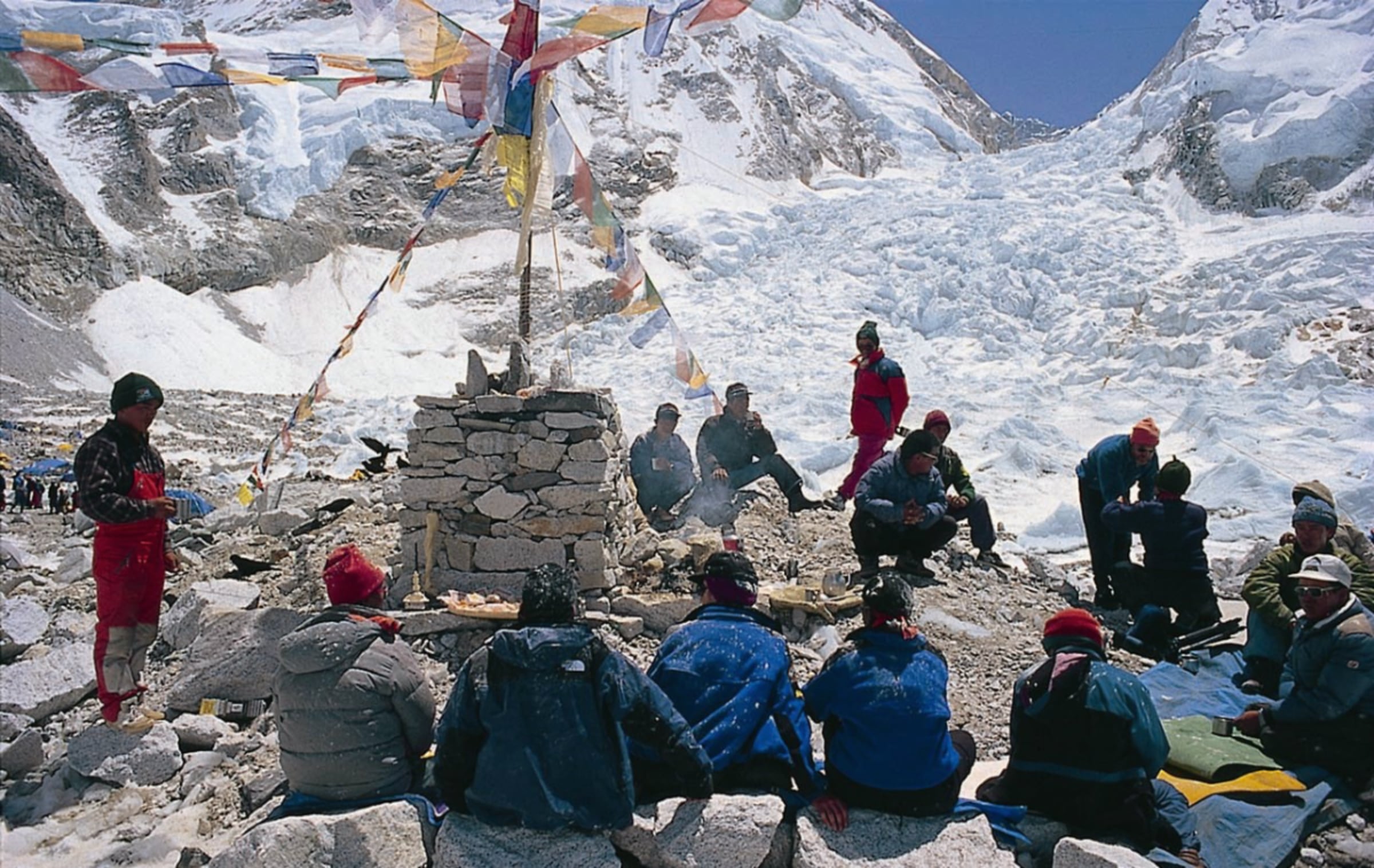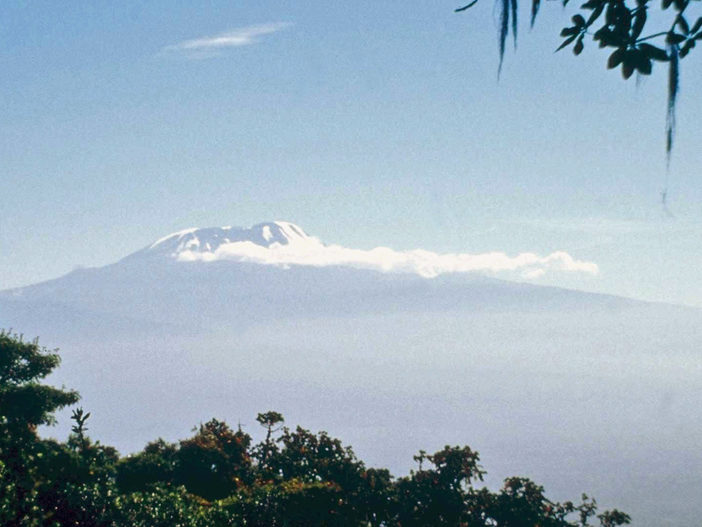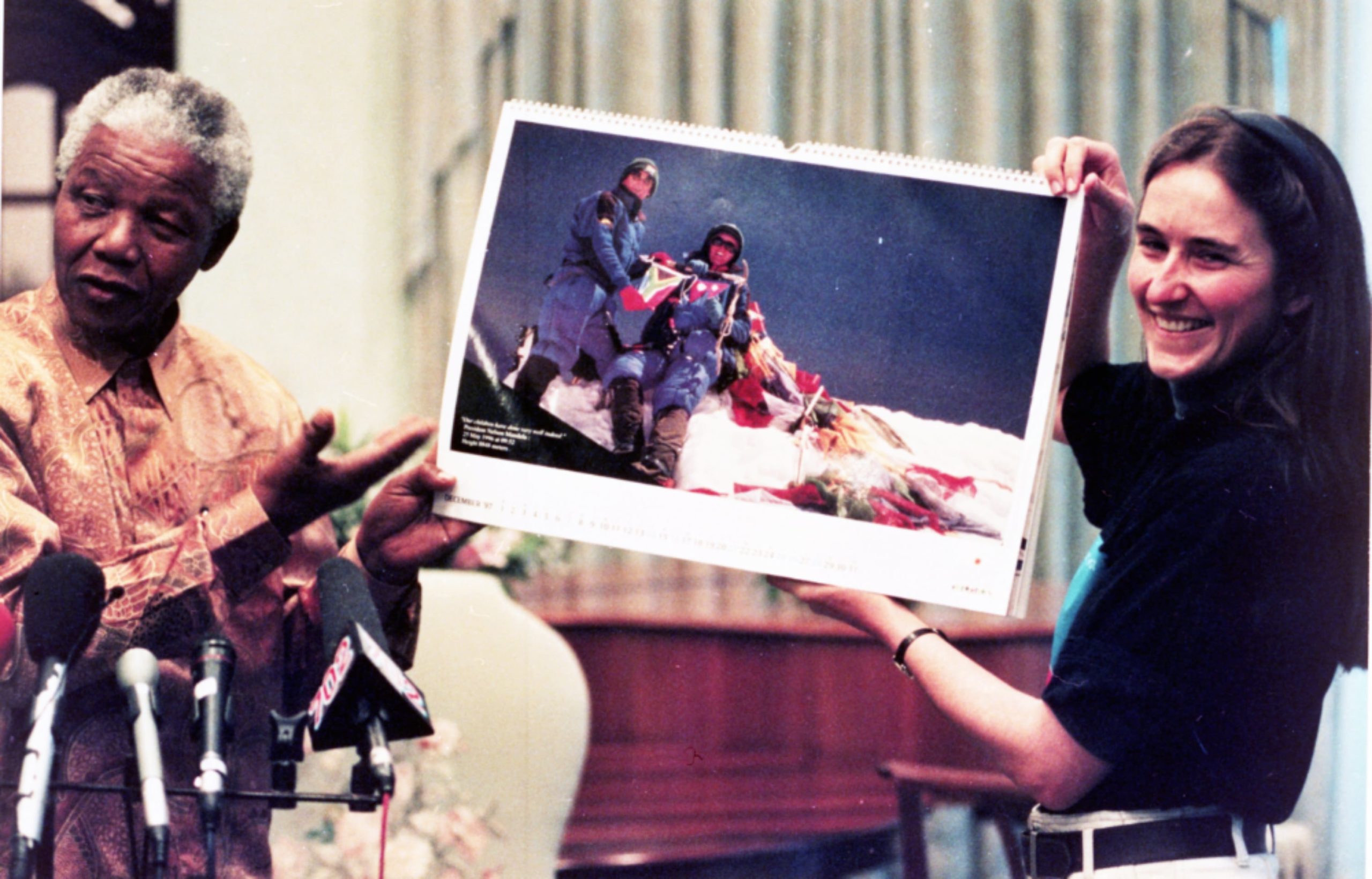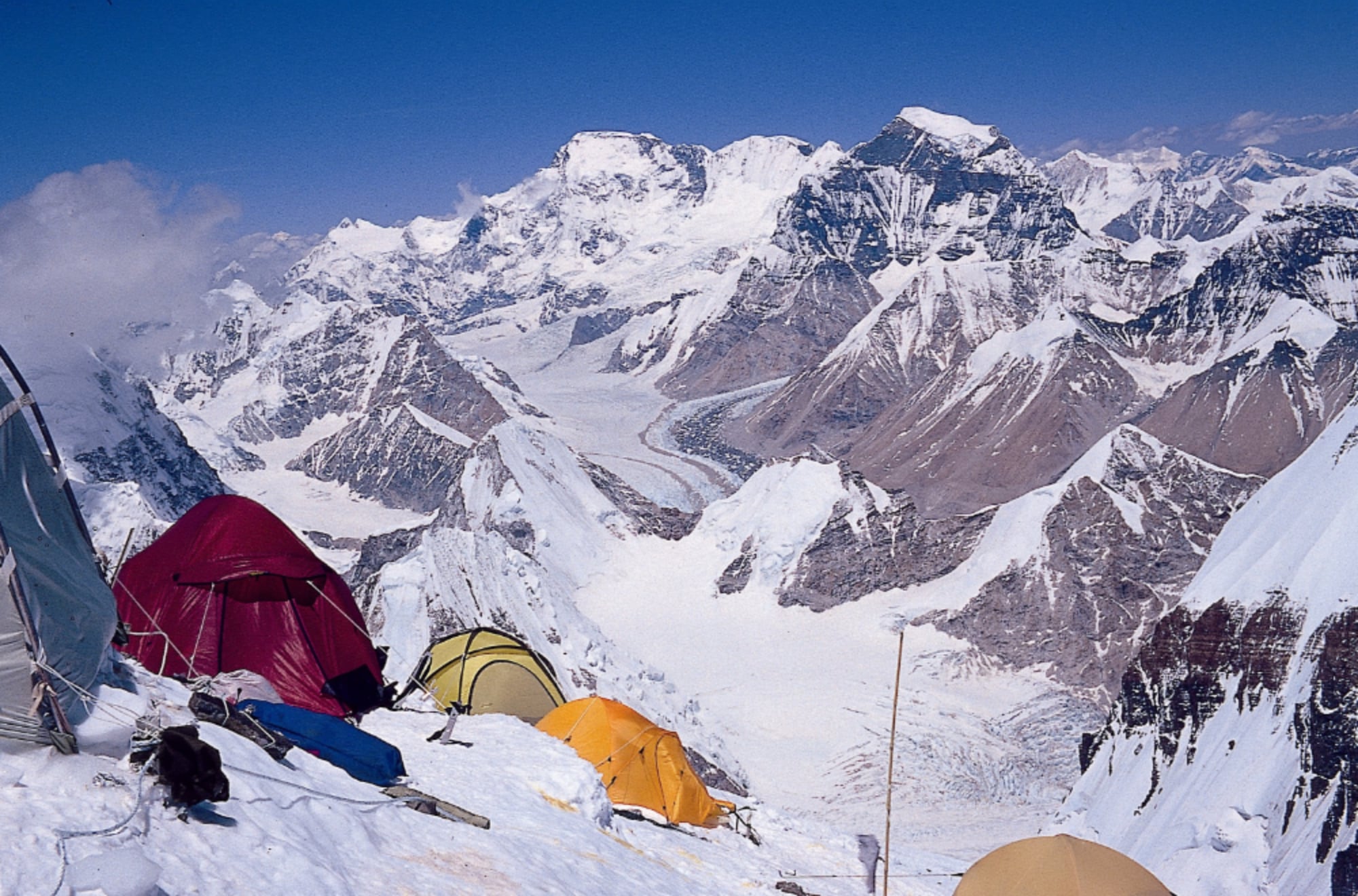News that a group of Sherpas attacked three climbers, two of who are current international superstars in the mountaineering world, began to wash across my FaceBook feed yesterday and the flood shows little sign of easing today.
Simone Moro and Ulli Steck hoped to attempt something – it is not entirely clear what as they’ve been keeping their options open – but probably a new route, climbed without oxygen or Sherpa support. They soloed across a fixed line being put in place on the Lhotse face by Sherpa teams employed by commercial expeditions and as a result were attacked when they returned to camp two.
The official statement released on Moro’s website reads in part: “By the time the climbers descended back to Camp 2 some 100 Sherpas had grouped together and attacked the three climbers. They became instantly aggressive and not only punched and kicked the climbers, but threw many rocks as well. A small group of Westerners acted as a buffer between the out of control mob and the climbers, and they owe their lives to these brave and selfless people…
After about 50 minutes the crowd had calmed down and the climbers, who had been pushed away and told to hide, had regrouped and were told that if they weren’t gone in one hour that they would all be killed.”
I don’t know Moro or Steck personally but both are superb alpinists with good reputations. I’ve climbed with Sherpas on a number of expeditions and they are normally laid-back and phlegmatic. If anything they veer between amused and perplexed by the drama that foreign climbers can often indulge in.
In this case the news is being flooded with the opinions of the aggrieved Western climbers with their easy access to international social and traditional media. Nothing has been heard so far from the Sherpas. Looking just at this incident, Moro and co. do seem to have reason to be angry, the reaction of the Sherpas appears completely disproportionate.
However I suspect that we need to step back from the immediate drama and consider the wider context of the interaction between the Sherpas and the foreign commercial teams with their ever-increasing numbers of clients. By the end of the 2010 climbing season, there had been 5,104 ascents of Everest by about 3,142 individuals. 77% of these ascents had been made since 2000! (Figures come from Eberhard Jurgalski of 8000ers.com.) On 25 May 1996 I became the 835th person to climb Everest. Now the record for the number of ascents in a single year is 633 in 2007. The vast majority of these climbers are channeled onto one path, the south col route. According to blogger Alan Arnette, there are 29 teams consisting of 315 foreign climbers and 500+ Sherpas/staff on that route right now.
The work done by the Sherpas is arduous and dangerous. One of their number has already died this season. Mingmar Sherpa, one of those who keep open the route through the Khumbu icefall, fell into crevasse in Western Cwm three weeks ago. They are under pressure to perform too, much of their income for the year will be earned in this two month period.
As respected British climbing journalist Ed Douglas points out in an article in The Guardian, “tension remains between tourism authorities in Kathmandu that collect the $10,000 (£6,450) per climb fee to climb Everest, the local Sherpa population that live at the foot of the mountain and western guides who attract clients on the strength of their reputation for safety.”
A more nuanced post comes from Adrian Ballinger of Alpenglow Expeditions, who is currently climbing on the mountain. He notes that “on Everest, the professional climbers (even when attempting new routes) also benefit from fixed ropes, trails broken, and rescue caches placed, primarily by the Sherpa. The professional climbers involved could have and should have chosen somewhere else to acclimatize on this day, instead of solo climbing above the rope fixing team. …. Even if no rock or ice actually was knocked off by the professional climbers, and even if no rope-fixing sherpa was injured, there was still a perception of disrespect for the effort.”
And he is has a point. If Steck and Moro wanted a truly independent attempt on Everest, they could have tried their current objective in the autumn or even the winter season. Or they could have gone onto the north side or even Everest’s seldom mentioned third face, the Kangshung face, where there are no teams at all this year. Why did they choose to be there now? Did ease of access play into it, or the enhanced media attention on Everest that comes each spring and that they need as sponsored professional climbers?
It saddens me when another respected climbing journalist, Andrew Bisharat, Editor at Large for Rock and Ice, puts up a blog post titled Everest Is Not For Climbers, and declares that “let the culture of guides and clients have Everest. If you want to do something big and different, go elsewhere!” The problem is not the mountain, it is largely one route in one two-month season per year. We need to step out of the queue and choose to do something different, even though it will be harder to do so.
I have attempted the east face of Everest – and it must be noted got absolutely nowhere in the process! For six weeks the four of us were the only people in the entire Kangshung valley. That solitude remains, the climbing is as hard as ever, and there are at least two lines still waiting there to be climbed. Let’s not shame Everest for this debacle, this is about ourselves.
And let’s not simply punish the three Sherpas who have been removed from the mountain and then bury the story. Jonathan Griffith, who was attacked with Moro and Steck, noted that “The reasons behind the attack are complicated and deep rooted and to do with the relationship between Westerners and Nepalis on the mountain over many years—not because of our direct actions.”
When this rush of blog posts, opinion pieces and newspaper articles dies down, I hope a journalist will do a carefully researched, thoughtful piece on what it is like to work on Everest as a Sherpa in 2013, how they are treated by Nepalese authorities and by foreign climbers, what they think of the foreign climbers that they assist, and why they might be harbouring such buried anger that it exploded forth into violence on the side of the world’s highest mountain.







Cathy this is an excellent piece of work. I have never climbed Everest, but I have been to Nepal, Tibet and Bhutan several times and always found the Sherpas, guides and porters wonderful people. There is much unsaid so far. I do hope the world press report and balanced perspective once the facts emerge. This can be so damaging to the economy of this part of the world.
I’m glad you liked it. It is always easier to report the immediate drama than to dig down for the complicated, contradictory issues that probably underlie it. The interaction allowed for by travel and tourism can be very beneficial to all parties when numbers are relatively small and yet bring a raft of new problems as numbers swell.
Cathy, An excellent summary of a series of very complex issues. Wes
This is the most sensible piece of writing I have read re the troubles on Everest. I have read many of the articles but after reading the above I don’t intend to read anymore. Thank you Cathy for making such a good assessment of the troubles and how to go forward.I intend to try to let the events slowly fade into the background and allow myself to let the magic return to Everest and it’s many adventurers.Good luck to them all and stay safe. Cheers Kate Smith
Thanks, I’m glad you felt it did justice to a very complicated issue.
Kate, I hope you find the magic again, it is an amazing mountain, but one that we should all be treating with respect.